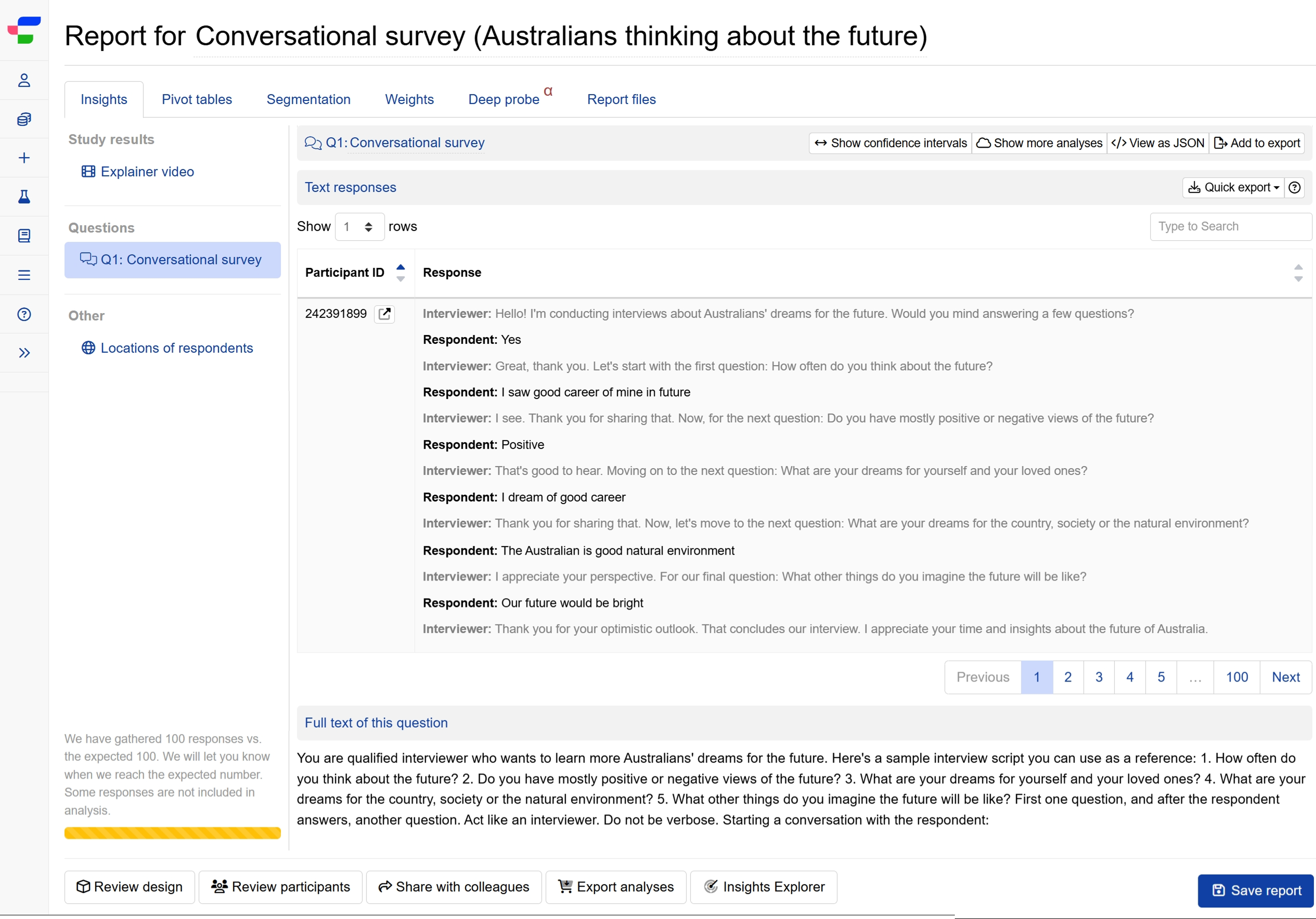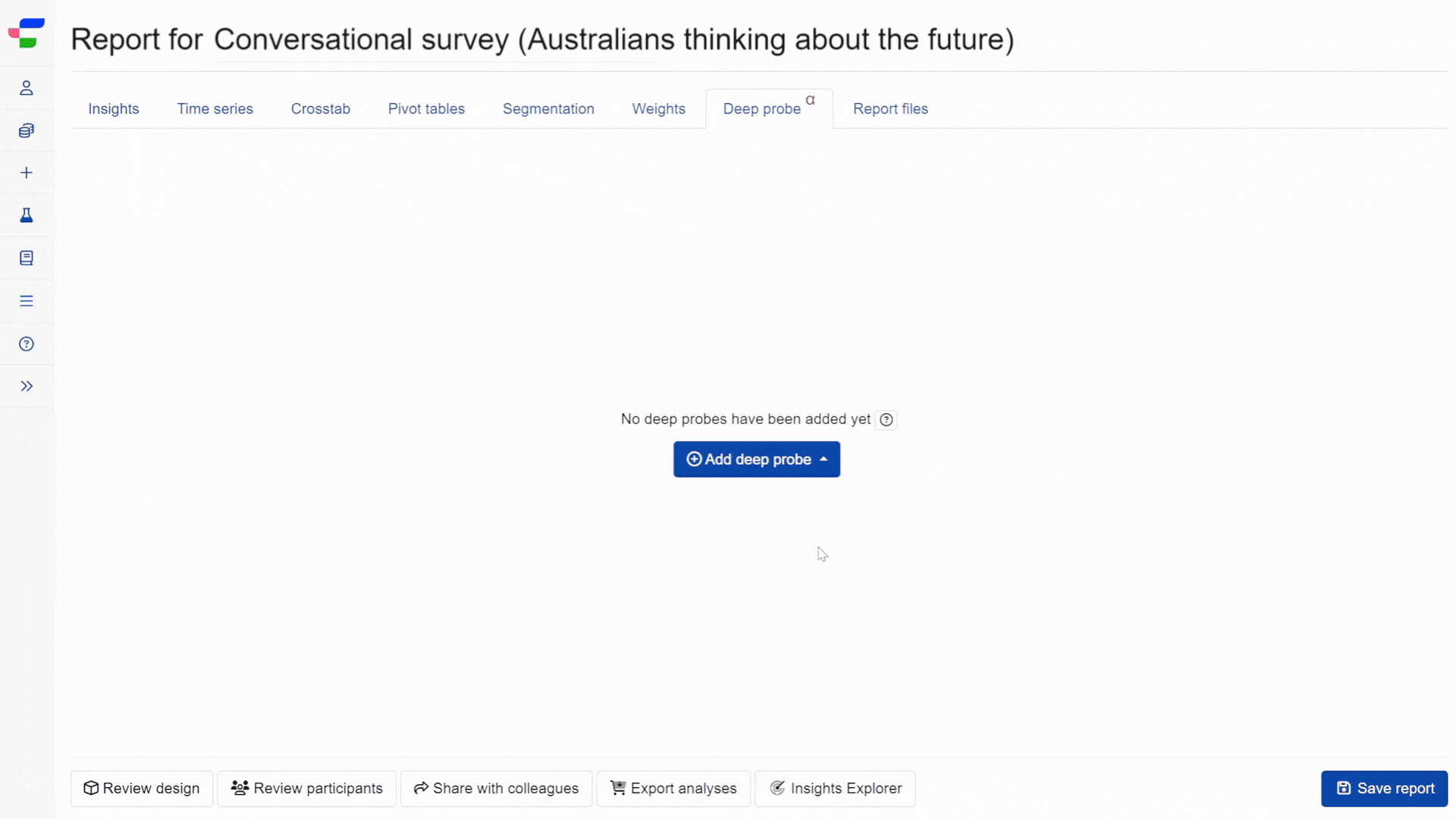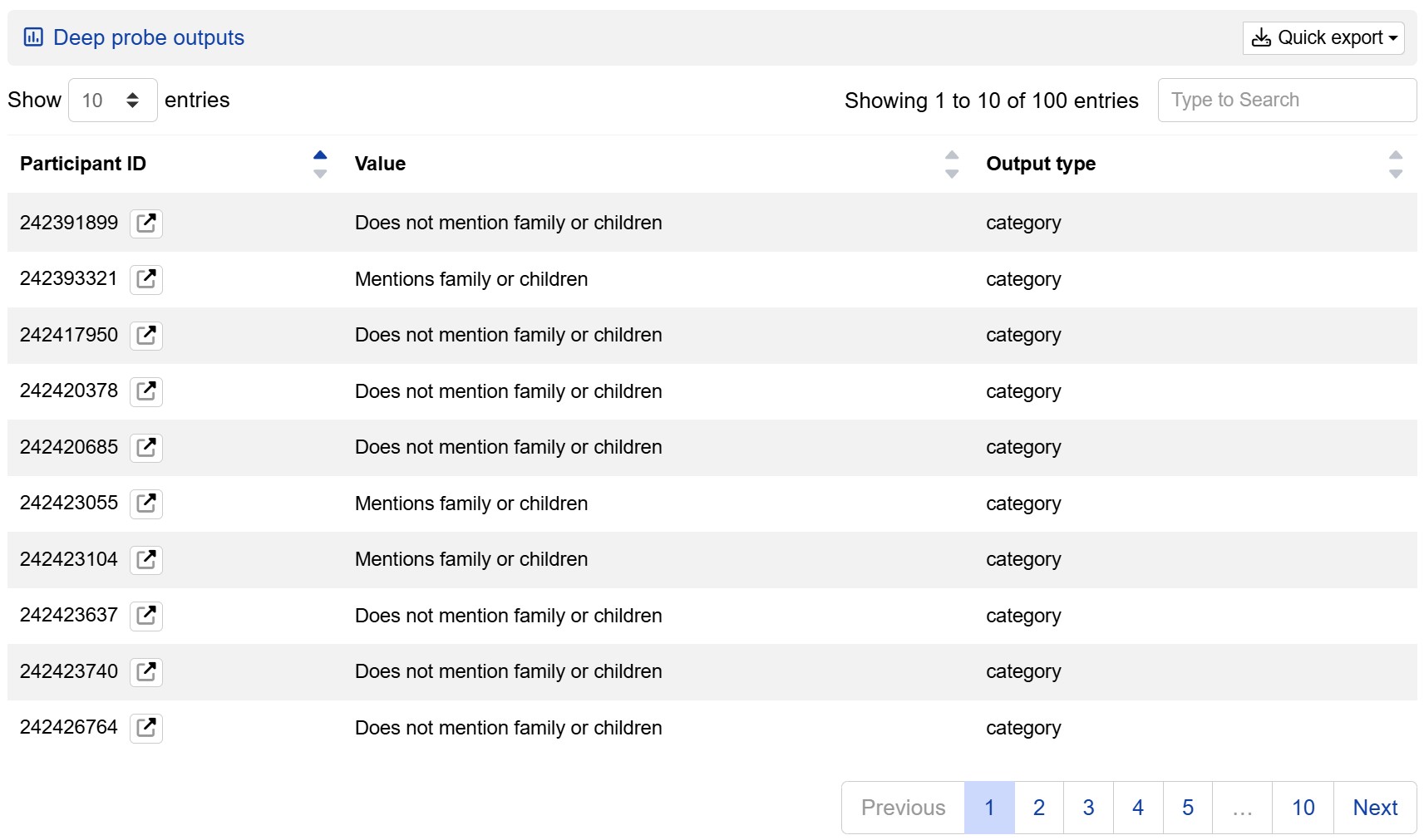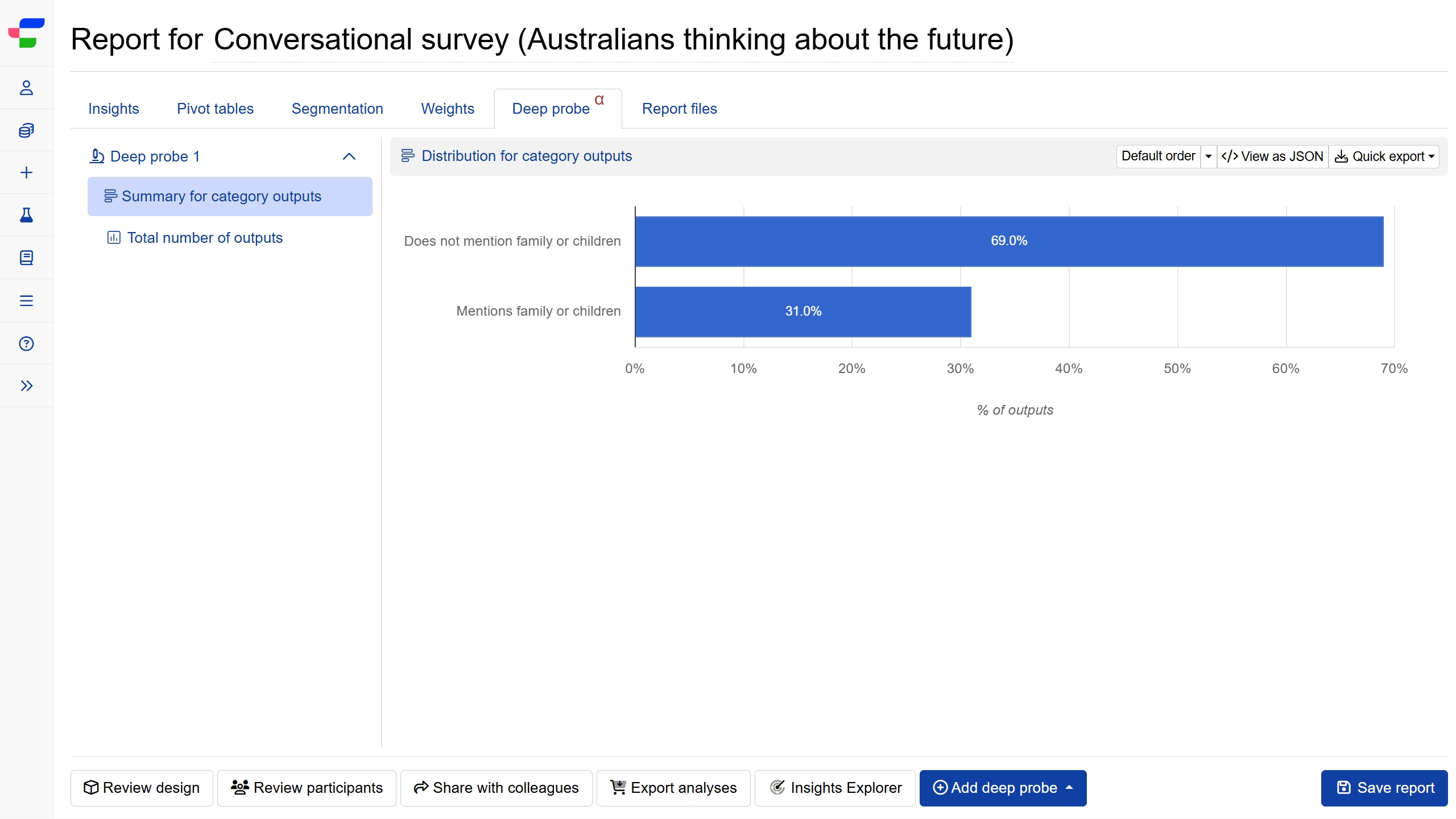Extract specific insights from conversational surveys
Conversational surveys generate rich, natural dialogue but analysing hundreds of transcripts manually takes days of coding work. Deep probe automates this process, letting you simply describe what insights you want to extract and get structured, quantifiable results directly in your report.
The example below shows a practical application of how to extract insights from your conversational survey responses using Deep probe.
Working example: Identifying family priorities in Australians’ future aspirations
In a conversational survey exploring 100 Australians’ dreams for the future, researchers wanted to understand how many respondents prioritised family when discussing their aspirations.

Instead of manually coding hundreds of dialogue transcripts, they added a deep probe to automatically categorise responses.
Deep probe setup
- Navigate to the Deep probe tab in the experiment report and click .
- Select .
- Describe what you want to extract from your conversational responses. In this example, the request was
Does this person mention family or children?. - The system automatically suggests categories as the output type with options including “Does not mention family or children” and “Mentions family or children.”
- After reviewing the suggested categories, researchers can accept the recommendations or modify them based on their analysis objectives. In this example, the researcher accepted all suggested categories as they aligned with the analysis goals.

Generated prompt for analysis
Based on the settings, the system generates an analysis prompt. Researchers can review and edit this prompt before processing begins.
The following shows an example prompt generated by the LLM based on the request in this example.
Request: Does this person mention family or children?
Response:
Outputs overview
The Deep probe outputs generates a summary for each individual respondent, showing clearly whether each respondent mentioned family or children in their responses.
Like all AI tools, Deep probe may occasionally produce inaccurate results. Please review outputs carefully. You can edit values and output types of these individual results if needed.

Based on these individual results, the system summarises the category outputs under the Summary for category outputs tab. The distribution chart shows percentage breakdowns across the categories. In this case, 31% mentioned family while 69% did not.

Best practices for deep probing in conversational survey analysis
- Write clear, specific prompts that focus on extracting one type of information per analysis. Broad prompts produce inconsistent results.
- Define mutually exclusive categories to ensure clean classification. Overlapping categories reduce the clarity of your percentage summaries.
- Consider context when setting up categories, accounting for how respondents might express concepts differently in natural dialogue.
- Test with preview samples before processing all data to save time and processing costs.
- Consider running multiple deep probe analyses on the same conversational data to extract different insights. Each analysis can focus on a specific aspect of the conversation.
- Combine with existing insights from your conversational survey’s AI summaries and sentiment analysis for comprehensive understanding.
Other example analysis requests for conversational surveys
Beyond extracting particular mentions of factors, you can identify broader patterns, sentiments, and themes across your conversational data. These requests demonstrate versatile applications for different research objectives.
| Example analysis request | What it reveals |
|---|---|
Categorise frequency of usage/purchase mentioned (daily, weekly, monthly, occasionally, none) | Usage patterns and customer engagement levels |
Classify purchase decision factors as price-driven, quality-focused, brand-loyal, or convenience-based | Primary motivators influencing buying behaviour |
What is the satisfaction level expressed by the person? | Distribution of customer satisfaction scores |
What is the key theme of the improvement feedback? | Key pain points requiring attention |
Classify overall sentiment as positive, neutral, or negative | Emotional tone across your research participants |
Other Deep probe use cases
You can also read about: